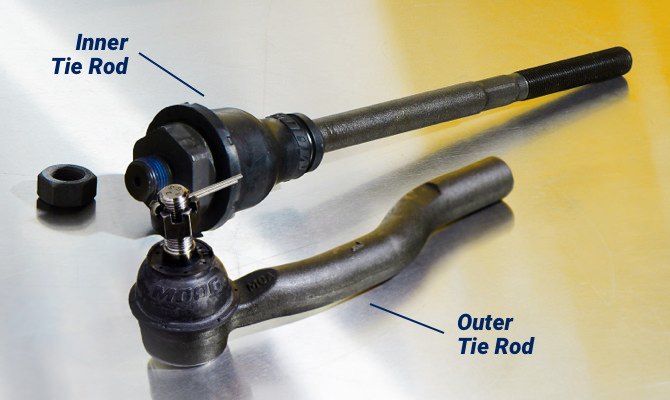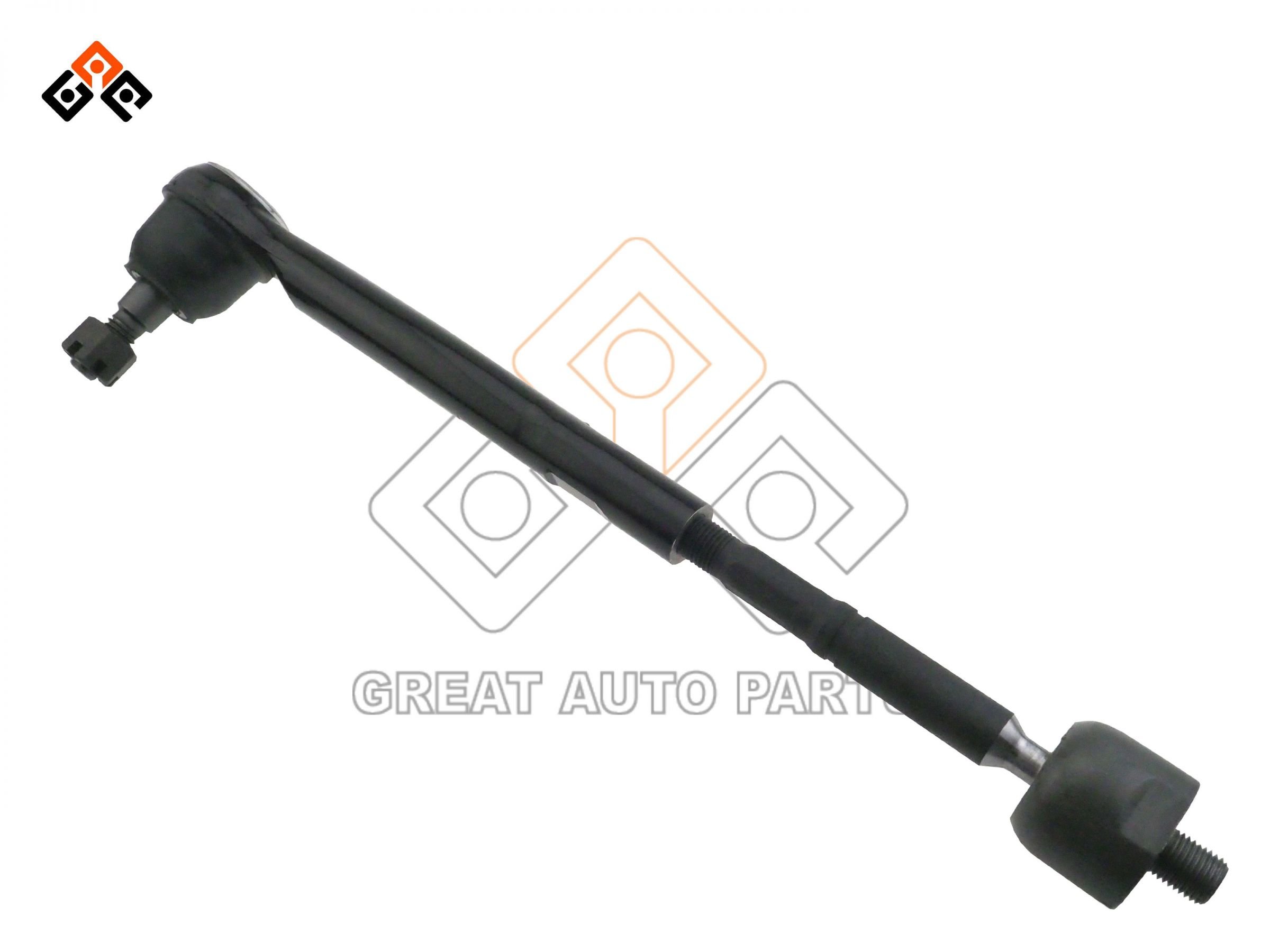Have you ever wondered how long your tie rod ends will last? You’re not alone.
These small but crucial components of your vehicle’s steering system often get overlooked, yet they play a vital role in your driving safety. Imagine cruising down the highway, confidently taking turns, knowing your car is in top shape. Understanding the lifespan of tie rod ends can keep you in that comfort zone.
But here’s the catch: neglecting them could lead to unexpected steering issues or costly repairs. You’re probably asking yourself, “How can I make sure my tie rod ends are in good condition? ” Or “What are the signs they need replacing? ” By the end of this article, you’ll have the answers to these questions and more. Dive in to discover how you can keep your driving experience smooth and safe, without the anxiety of potential steering problems lurking under the hood.
What Are Tie Rod Ends
Tie rod ends are parts of the steering system. They help control the car’s wheels. These ends connect to the steering rack. This helps the car turn smoothly. Safe drivingdepends on them. Tie rod ends help steer the car. They make sure the wheels are aligned.
These parts are very important for the vehicle. They must be in good condition. Regular checksare necessary. This prevents accidents. Tie rod ends wear out over time. They need replacement when damaged.

Credit: www.moogparts.com
Function In Vehicle Steering
Tie rod ends help cars turn. They connect wheels to steering parts. When steering, they move the wheels left or right. This makes driving safe and smooth. Tie rod ends are very strong. They need to be strong to handle bumps and turns. Sometimes, they wear out. This can cause steering problems. Always check them during car service. If they break, steering becomes hard. It can be dangerous. Good tie rod ends keep steering easy and safe.
Tie rod ends are small but important. Without them, steering won’t work well. Keep them in good shape. It makes driving easier. Remember to check them often. Safe driving needs strong tie rod ends.
Factors Affecting Lifespan
Harsh roads can wear tie rod ends fast. Bumpy terrain leads to quick damage. Smooth roads help them last longer. City driving can be tough, due to frequent turns. Highway driving is easier on tie rods.
High-quality tie rod ends last longer. Cheap components wear out fast. Brand reputation matters. Quality materials ensure durability. Proper installation is crucial for longevity.
Regular checks keep tie rods in shape. Timely replacements prevent bigger issues. Proper lubrication reduces wear. Ignoring noises can lead to failure. Inspection by professionals is beneficial.
Signs Of Wear And Tear
Tie rod ends typically last between 50,000 to 100,000 miles. Common signs of wear include loose steering, uneven tire wear, and clunking noises. Regular inspections help ensure safe driving and timely replacements.
Vibration In Steering Wheel
The steering wheel may shake or vibrate. This happens at high speed or on rough roads. A loose tie rod end causes this. It affects the car’s handling. Safe driving becomes difficult.
Uneven Tire Wear
Check your tires for uneven wear. This can be a sign of bad tie rod ends. Tires wear faster on one side. You might need a tire replacement sooner. Proper alignment is important.
Noises While Turning
Listen for noises when turning the wheel. Clunking or squeaking sounds are common. These noises mean trouble. Tie rod ends might be the cause. Fix them to prevent further damage.
Average Lifespan Expectations
Tie rod endsare small parts in a car. They help with steering. These parts don’t last forever. On average, they last about 50,000 to 70,000 miles. This is like driving across the USA and back. But they can wear out faster. Bumpy roads or rough driving can shorten their life. Regular checks are important. Catch problems early and avoid bigger issues. If they fail, steering becomes hard. Safety can be at risk. So, keep them in good shape.
Inspection And Maintenance Tips
Regular check-ups help keep your tie rod ends in good shape. Look for any wear and tear. Listen for strange noises when turning. Early detection can prevent bigger issues. Check every 6,000 miles or six months. This keeps your car safe and running well.
Proper lubrication is vital for smooth movement. It reduces friction and wear. Use the right type of grease. Apply it every oil change. This helps extend the life of your tie rod ends. Always check the manufacturer’s guidelines.
Alignment services ensure your wheels are straight. Misalignment wears out tie rod ends faster. Get an alignment check once a year. This keeps your car driving straight. It also helps reduce wear on tires and tie rods. Keeping everything aligned saves money in the long run.
When To Replace Tie Rod Ends
Tie rod ends are vital for steering. They connect the steering rack to the wheels. Worn tie rod ends can cause problems. Your car may feel shaky. Steering might become loose. Listen for strange sounds when turning. A clunking noise can be a warning. Look for uneven tire wear. It’s a common sign. Regular checks help keep you safe. A mechanic can inspect them. They check for damage or wear. Replacing them on time is crucial. It prevents further issues. Safe driving depends on it. Keep your car in top shape. Proper maintenance saves money. It ensures a smooth ride.

Credit: www.greatap.com.tw
Choosing Quality Replacement Parts
Picking the right parts is essential for car safety. Always check the material of the replacement parts. Good materials last longer and perform better. Steel is a strong choice for many car parts. It is strong and durable.
The brand of the part also matters. Some brands are known for high quality. They may cost more, but they can be worth it. Customer reviews are helpful. They tell you if the part works well.
Also, consider the warranty offered. A good warranty shows trust in the product. It gives peace of mind if something goes wrong. Lastly, always follow the car manual for specifications.
Professional Vs. Diy Replacement
Professional replacementof tie rod ends is often quick. Experts have the tools. They ensure correct installation. The job is done with precision. This can save time. It also brings peace of mind. Mechanics check other parts too. This helps spot any hidden issues.
DIY replacementcan be cheaper. Many choose this option. A basic toolkit might be enough. But, understanding the process is crucial. Mistakes can lead to bigger problems. Safety might be compromised. Reading a guide or watching videos helps. It’s important to follow each step closely.
Both options have pros and cons. Choose what suits your comfort level. Always prioritize safety and quality.

Credit: www.testingautos.com
Conclusion
Tie rod ends are crucial for steering. Regular checks can prevent issues. Lifespan varies, often lasting 50,000 miles or more. Driving conditions affect wear and tear. Rough roads may reduce their lifespan. Listen for unusual sounds or feel loose steering.
These are warning signs. Routine maintenance helps prolong life. Replace worn tie rod ends promptly. This ensures safety on the road. Always consult a mechanic for advice. Keep your vehicle in top shape. Safe driving is a priority. Make sure your tie rod ends are reliable.
Your car’s performance depends on it. Stay informed and drive safely.
